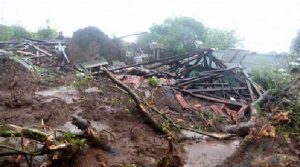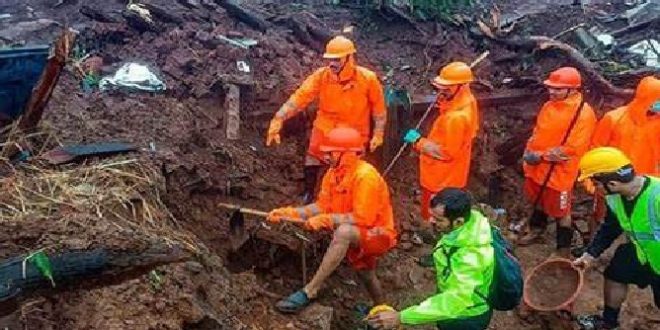26-07-2023
Bureau Report + Agencies
NEW DELHI: Indian authorities have called off efforts to find survivors four days after a deadly landslide hit a village in the western state of Maharashtra.
Twenty-seven bodies were found while 57 people are still missing after the landslide, which occurred in Irshalwadi village in Raigad district.
 Rescue efforts were hindered by the tough terrain and heavy rain.
Rescue efforts were hindered by the tough terrain and heavy rain.
The decision was taken after talking to the Raigad administration and other authorities, a state minister said.
The landslide, which took place on Wednesday night, flattened several homes in the village, which is located halfway up the slope of a steep mountain called Irshalgad.
The mountain range, which is part of the Deccan Traps (a volcanic province), was formed over 60 million years ago, says Janhavee Moole from BBC Marathi.
“It’s difficult to reach and the terrain is considered risky even for seasoned trekkers,” she says.
Rescue operations were complicated by the terrain – which was slippery due to ongoing rains as well as due to the fact that mud was continuing to fall on the teams.
“Rescuers had to climb for about two hours to reach the spot every morning. By the second day, rescuers and locals had realized that it would be difficult to continue the operation for longer,” Moole says.
 Officials said last week that much of the mud had to be cleared manually as it was hard for heavy machines such as JCBs to reach the spot.
Officials said last week that much of the mud had to be cleared manually as it was hard for heavy machines such as JCBs to reach the spot.
Several states in India have experienced heavy rainfall over the past few weeks, triggering floods and landslides. India’s weather department has predicted more rains in parts of Maharashtra state, including Raigad district, where schools were closed on Monday.
According to government data, there were 43 houses in the village, where 228 people lived. Around 144 people have either been rescued or were away from Irshalwadi at the time of the disaster.
Locals and people involved in rescue efforts told media Marathi that only around four to five houses are still standing in the village.
The people in the village belonged to an indigenous tribe and made a living by foraging in the forest and some agricultural activities, says Moole, who grew up near the area.
 Pressmediaofindia
Pressmediaofindia




